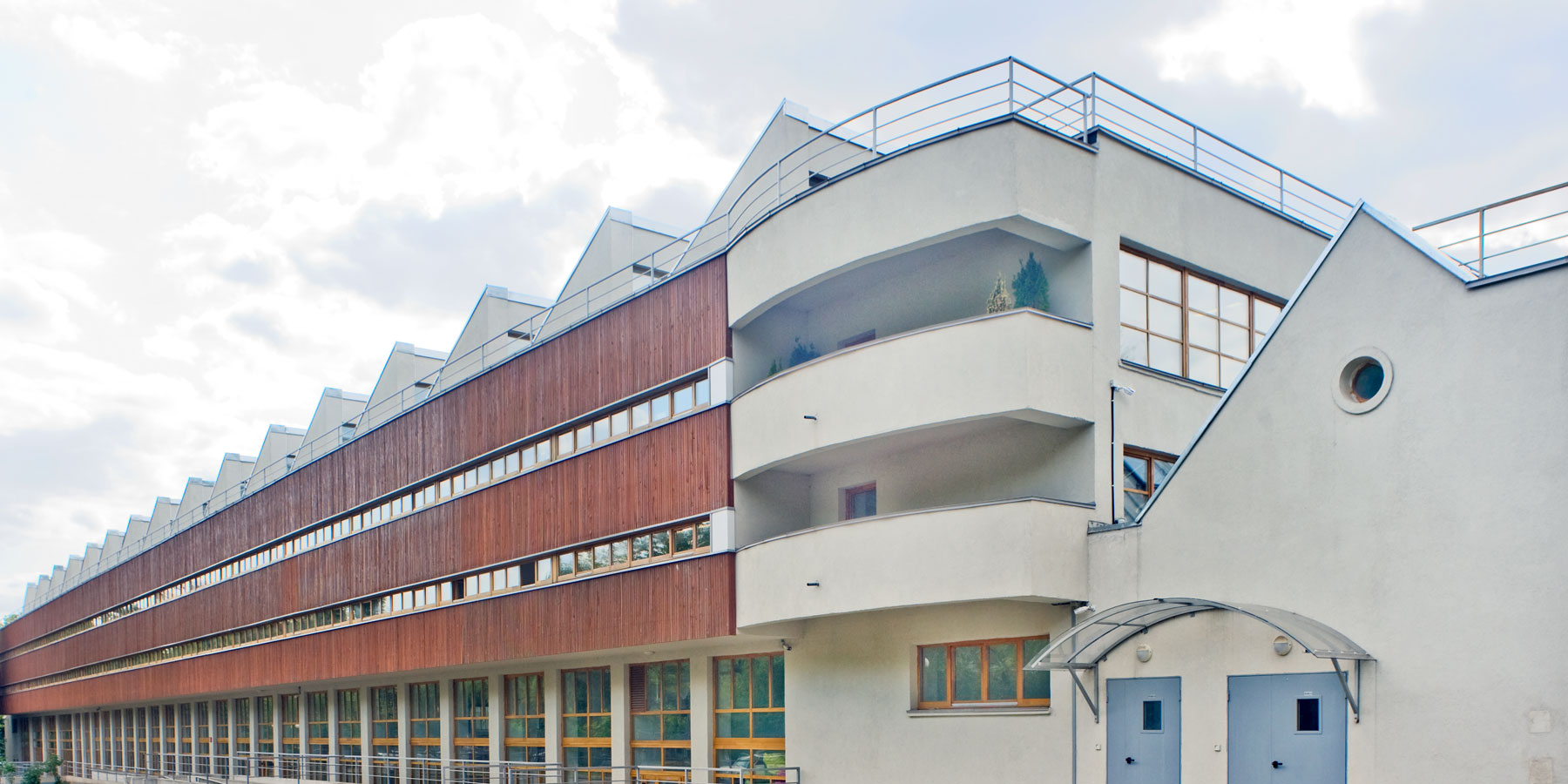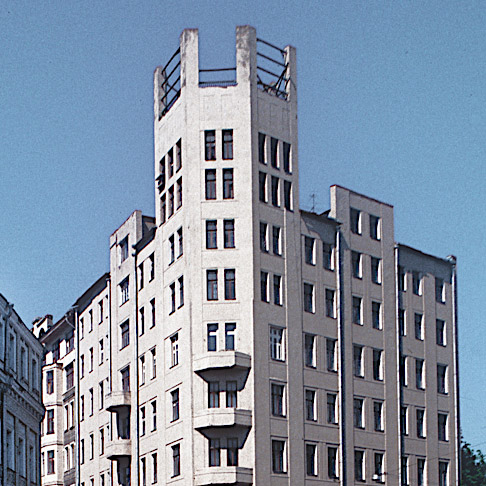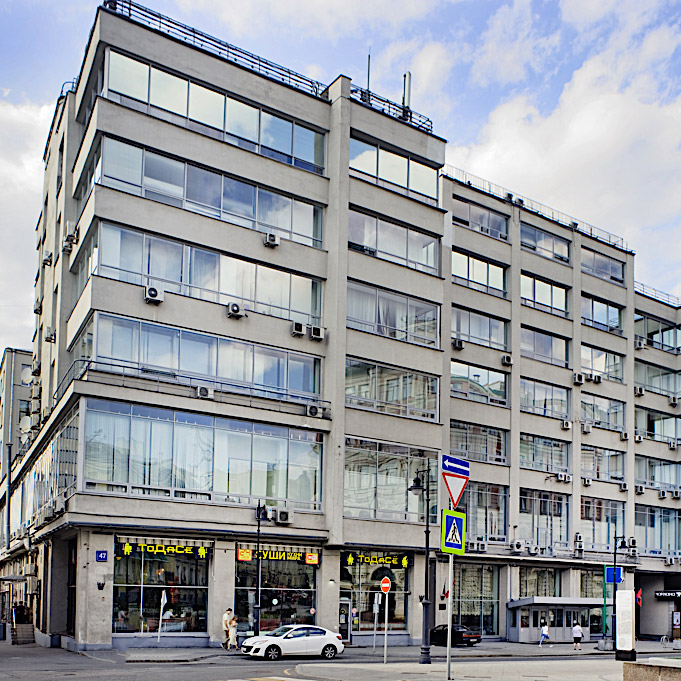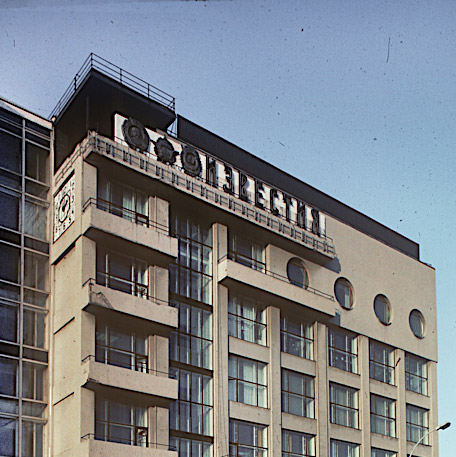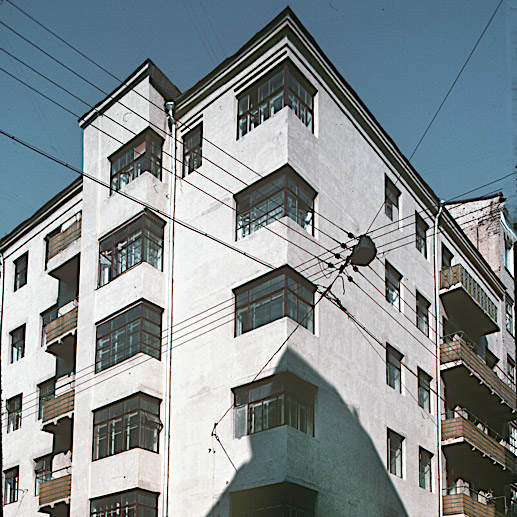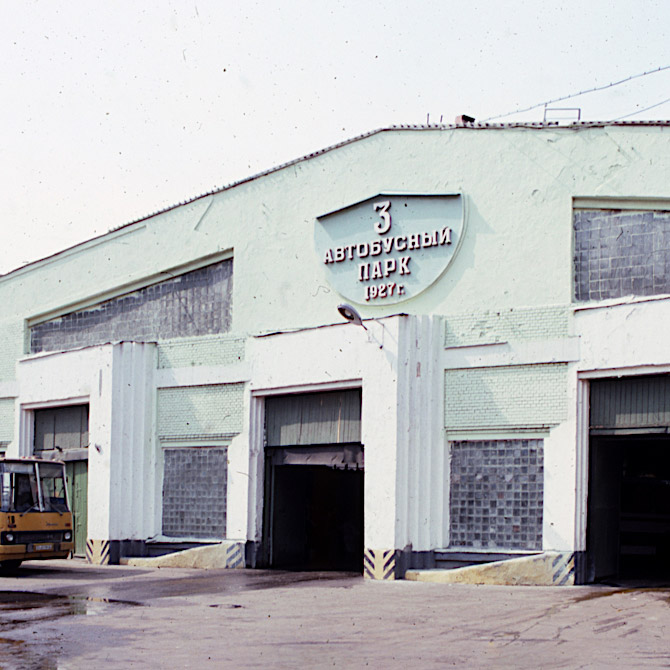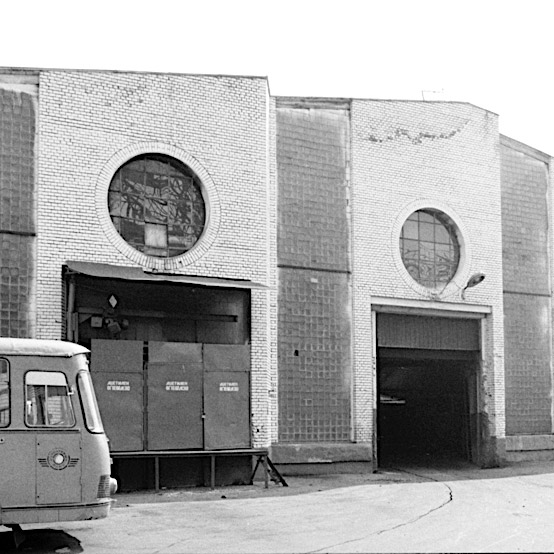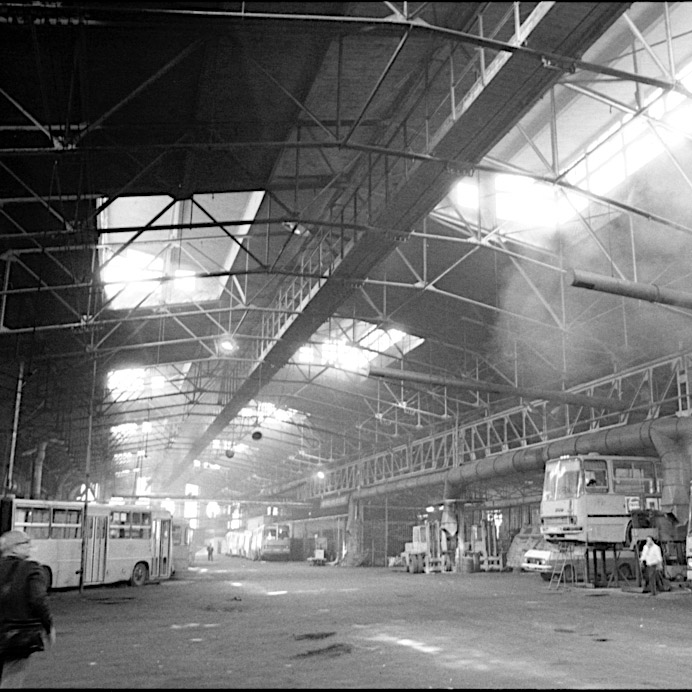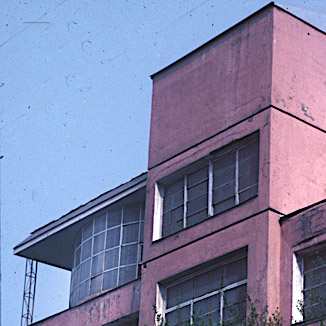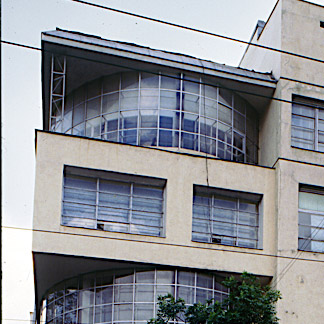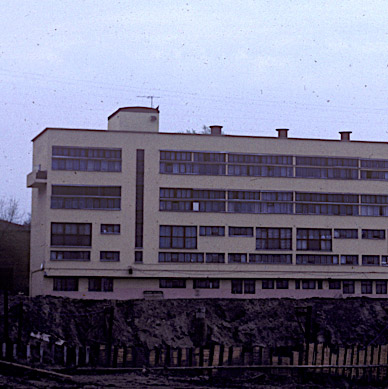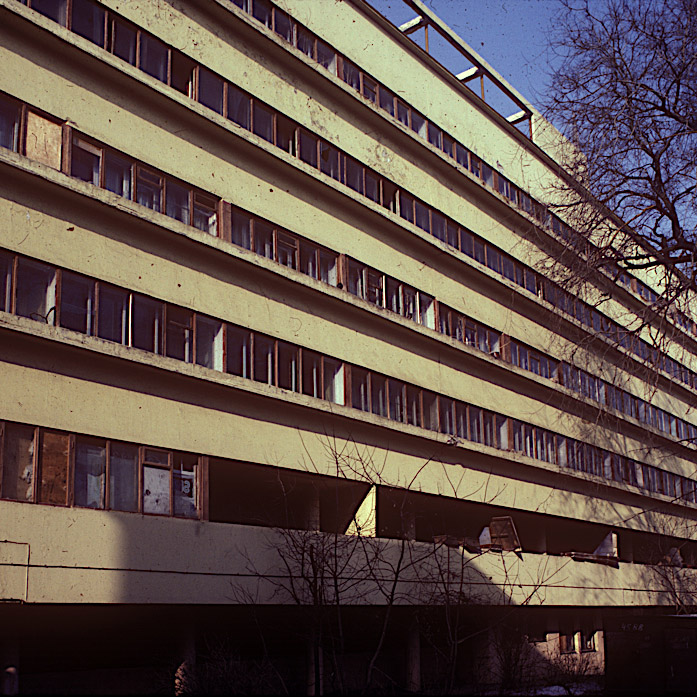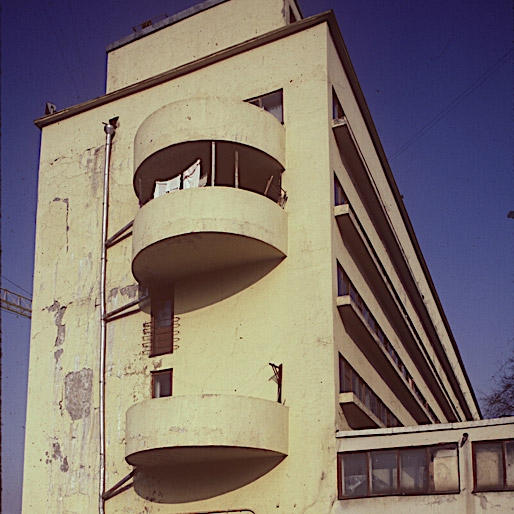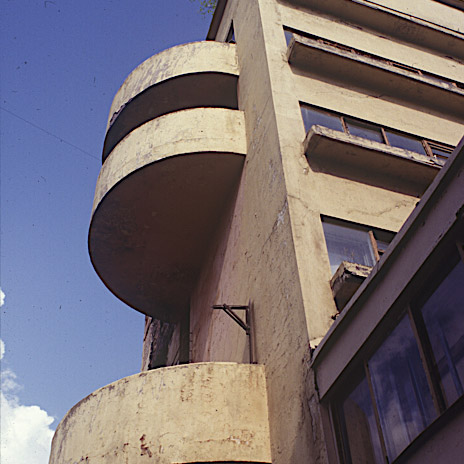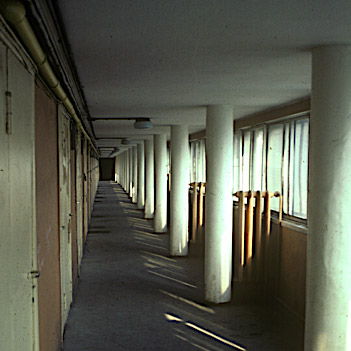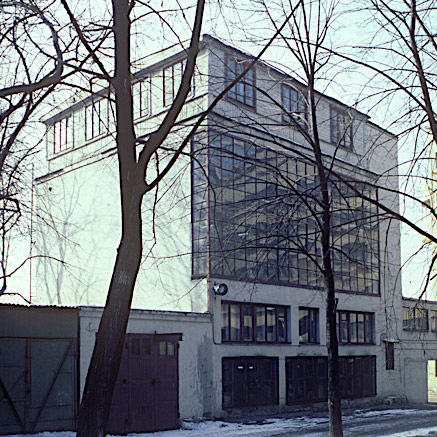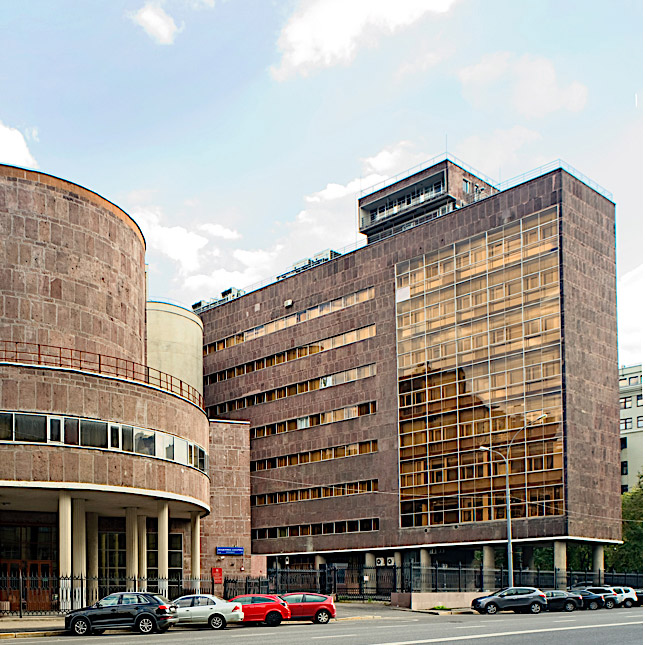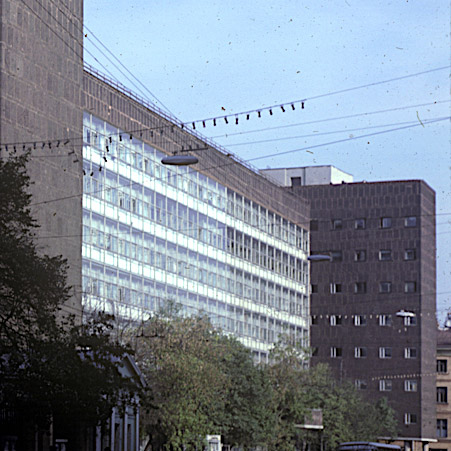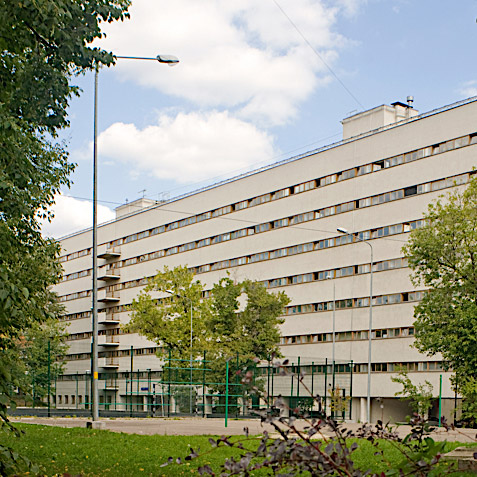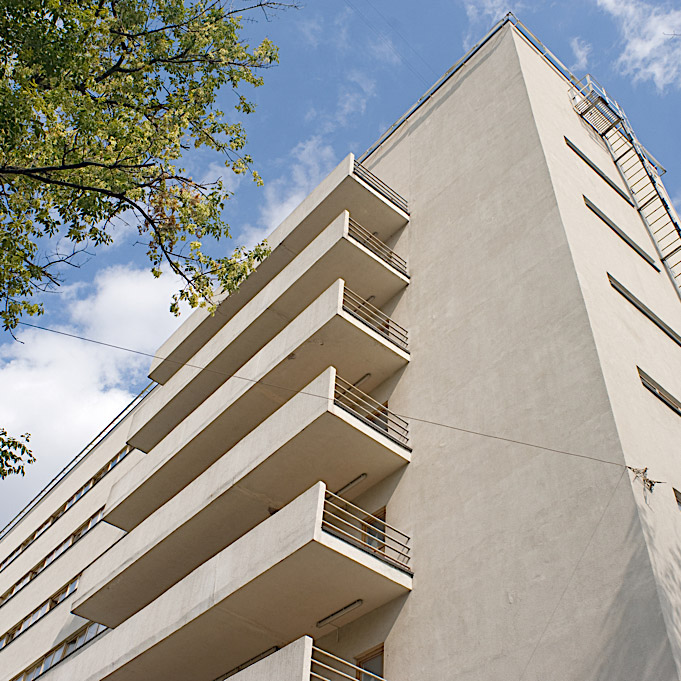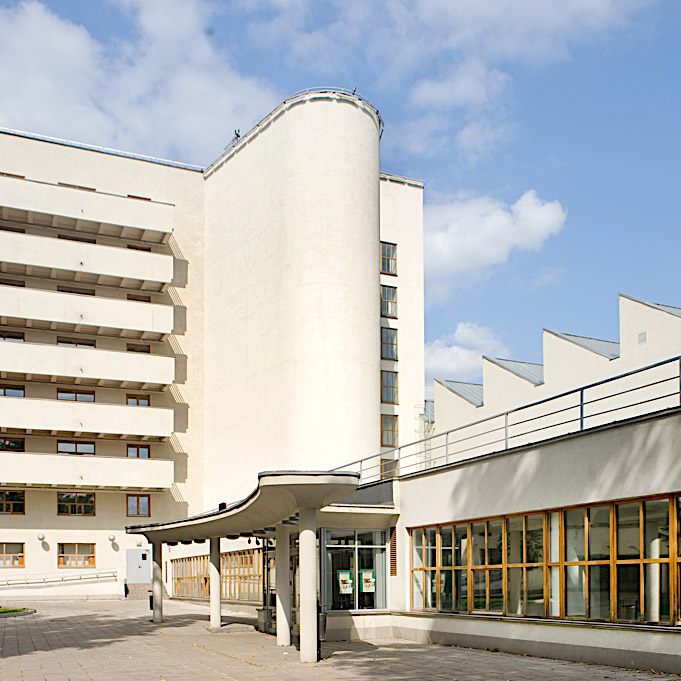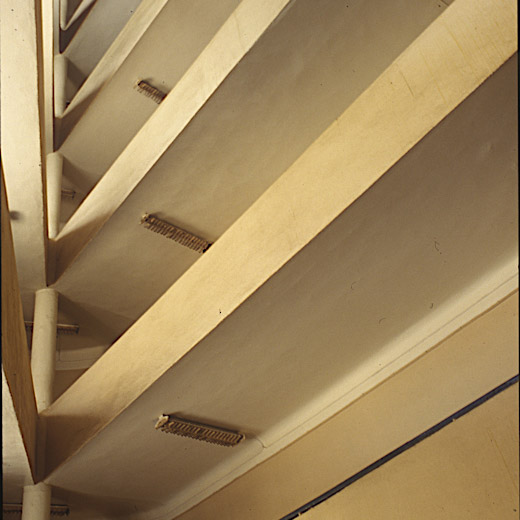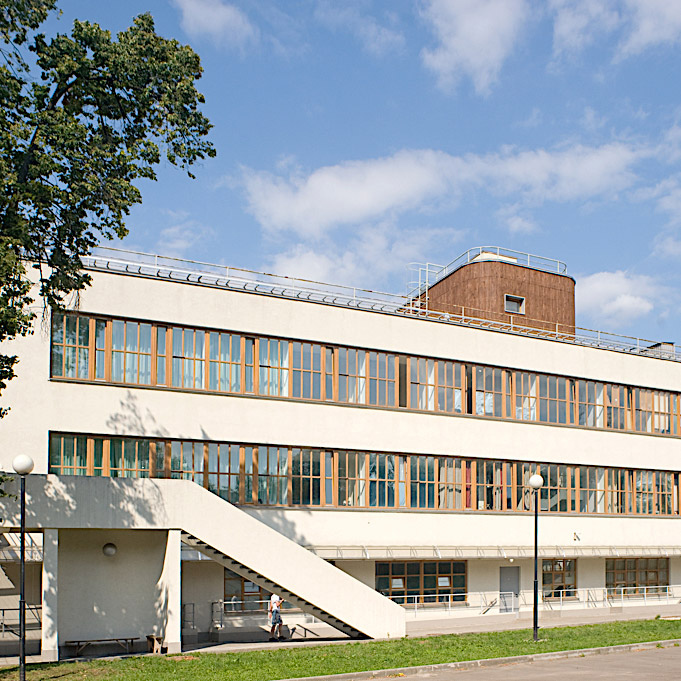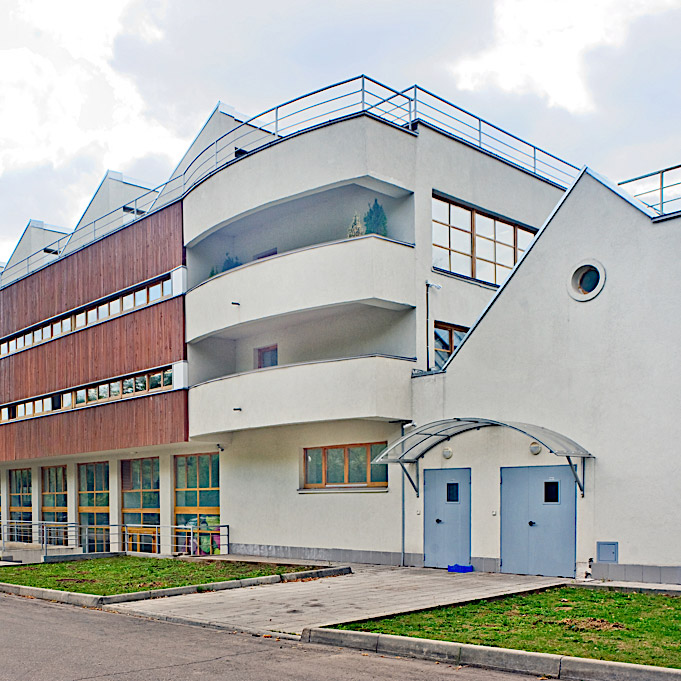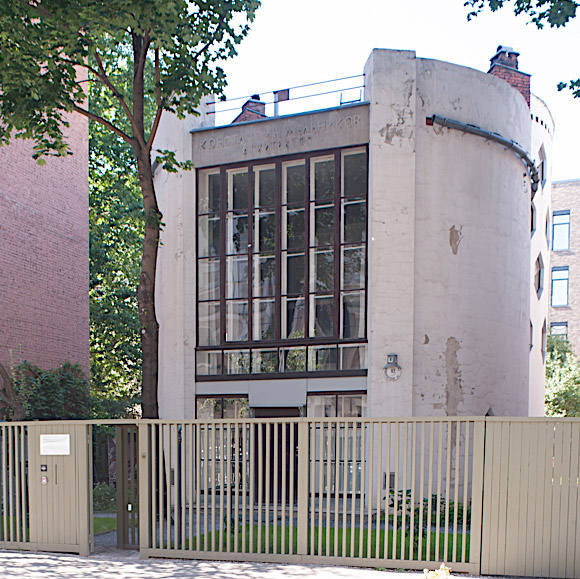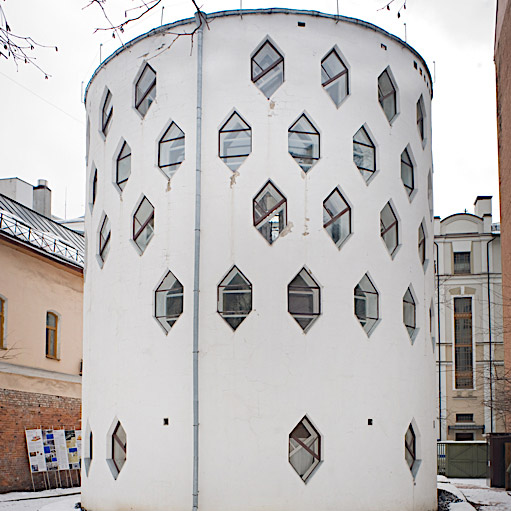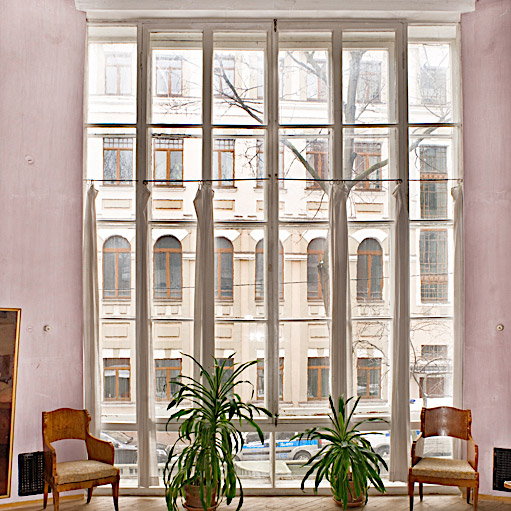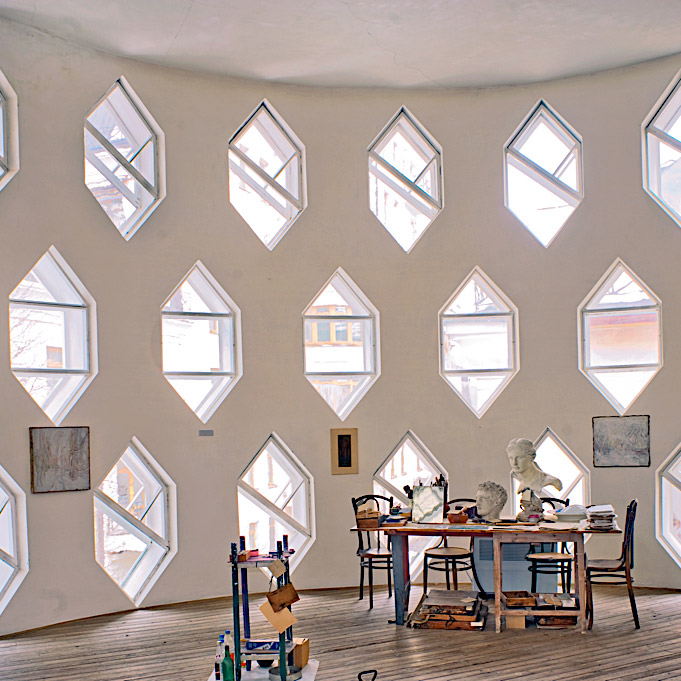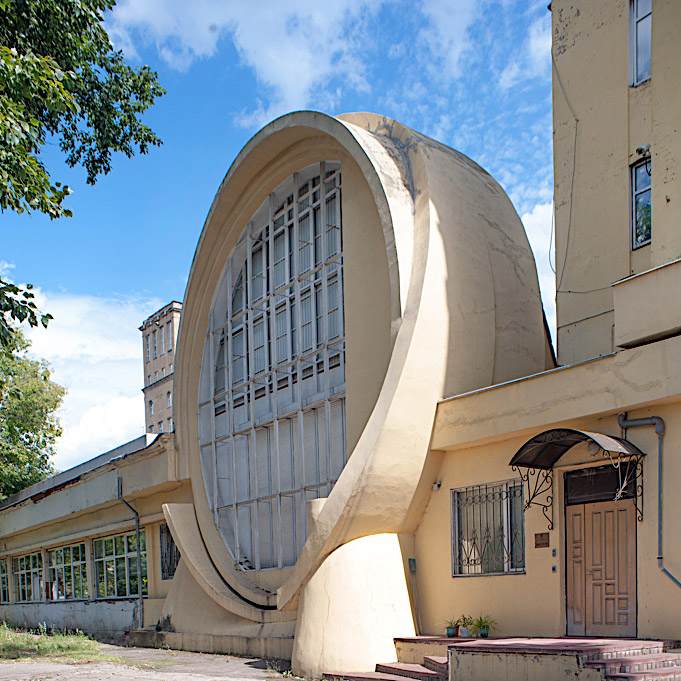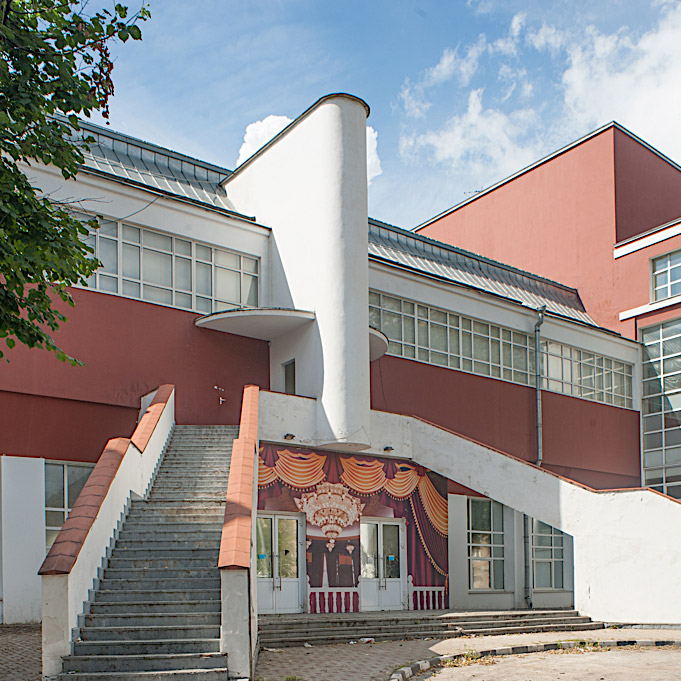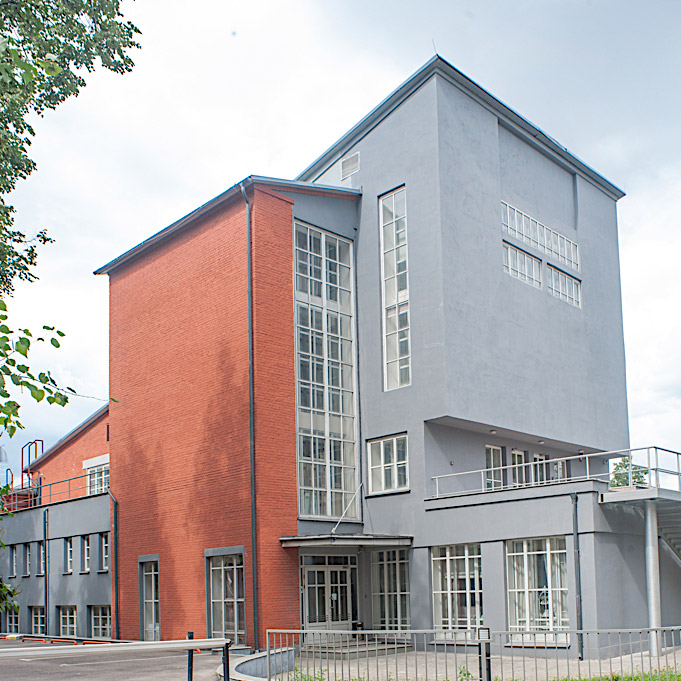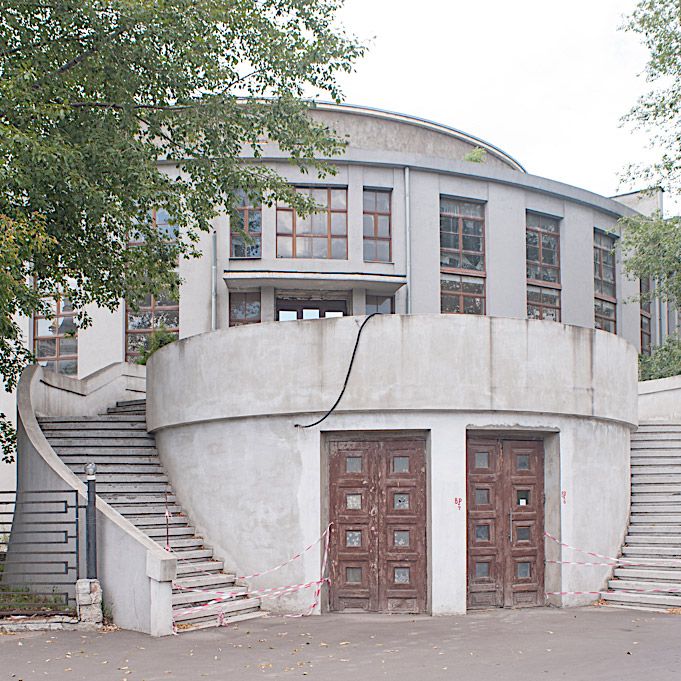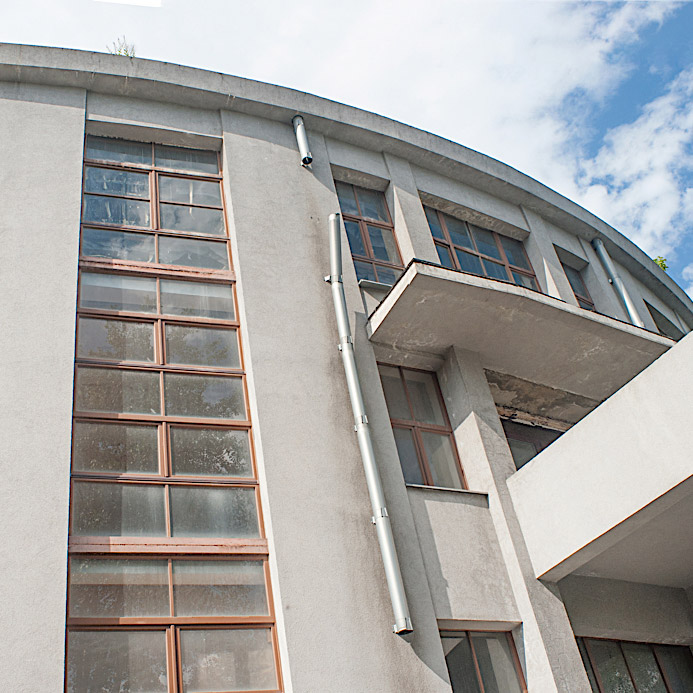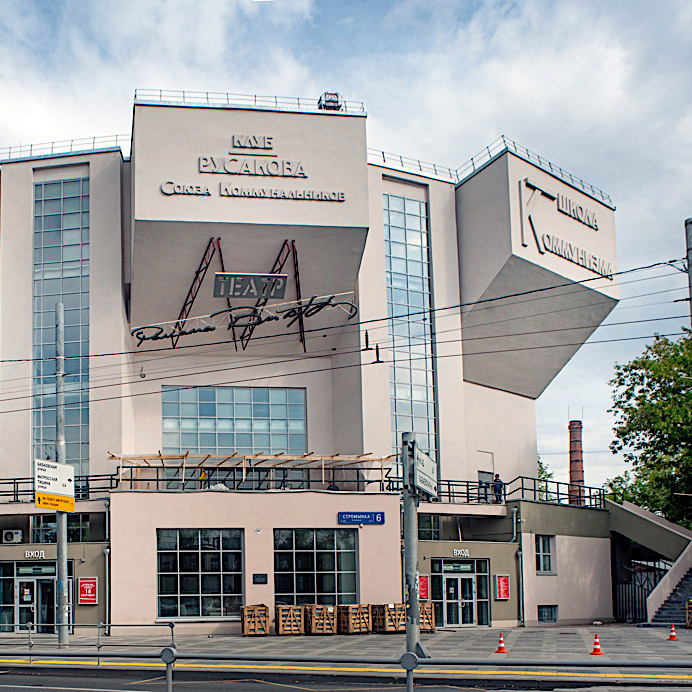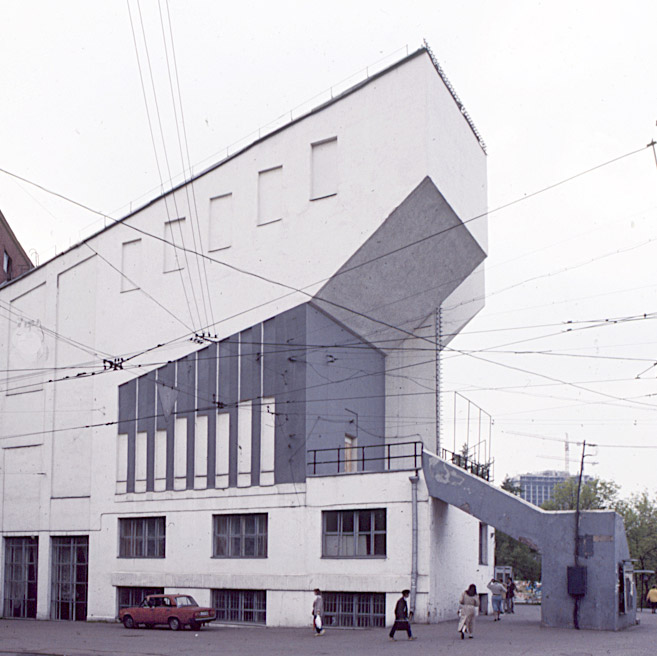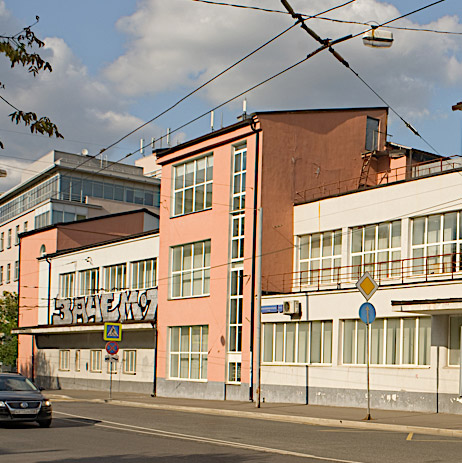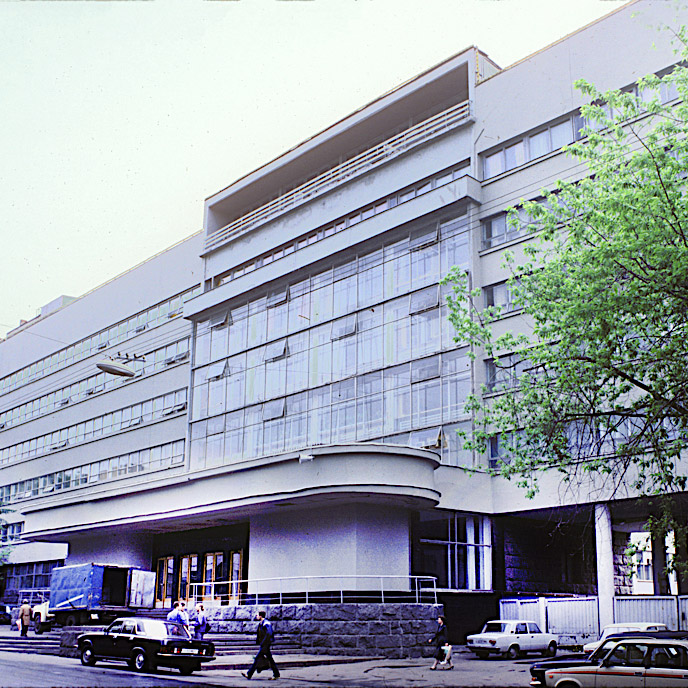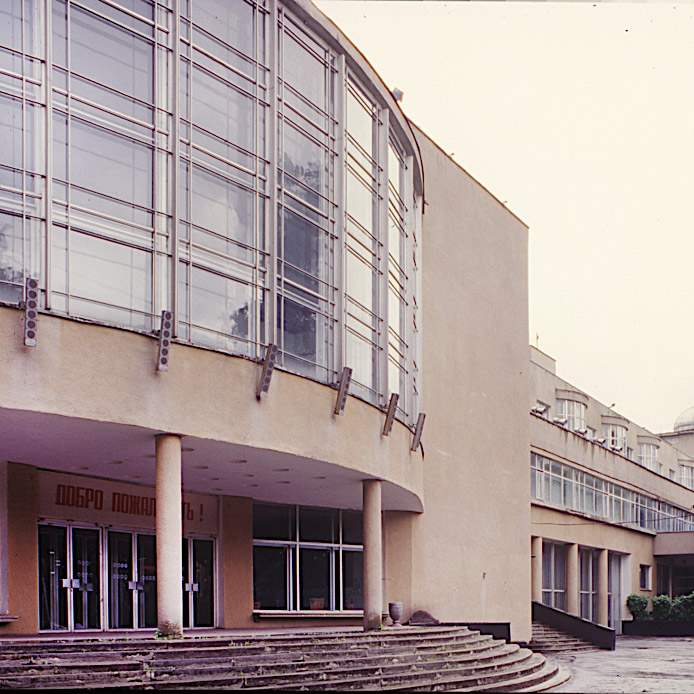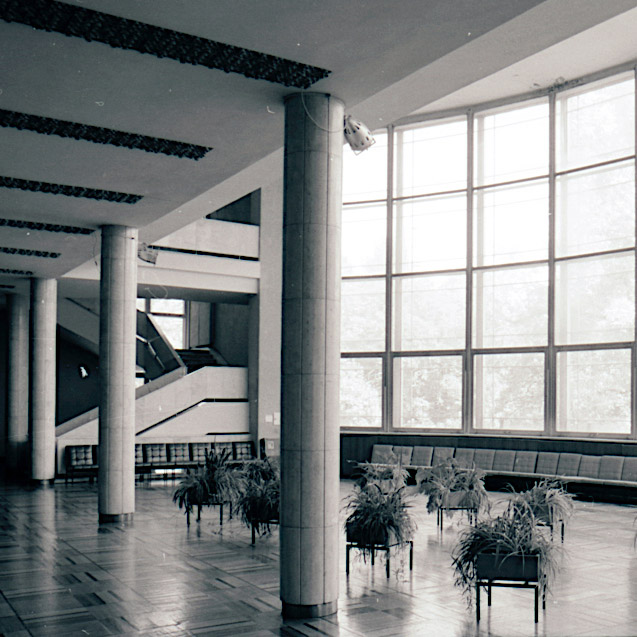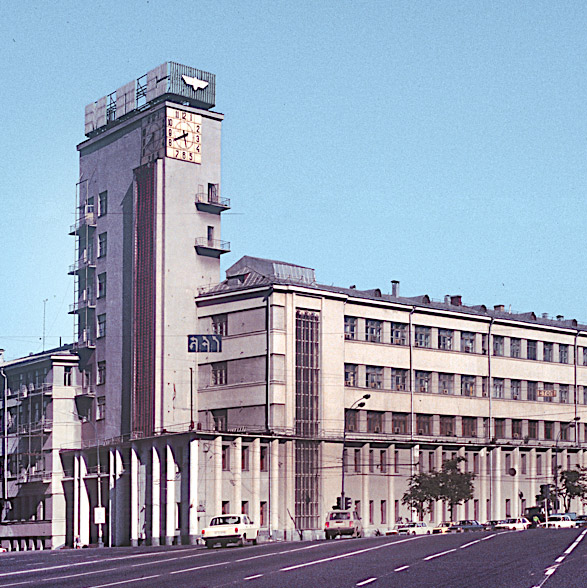Travels Across Russia: Avant-Garde Architecture in Moscow
In the early 1920s, political developments in the newly established Soviet Union created an environment for radical innovation in architectural design. Many of the designs remained on paper, but by 1925 a number of large-scale experimental projects were undertaken despite severe limitations on engineering technology. The parallels with avant-garde movements elsewhere in Europe and in the United States led to an international exchange of ideas in the realm of architectural theory.
The most significant manifestation of Soviet avant-garde design in the 1920s was constructivism, represented by the Organization of Contemporary Architects. “Constructivism” has since been used as a general designation for modernist architecture in the Soviet Union, although there were prominent avant-garde architects such as Konstantin Melnikov who rejected the label. In the early 1930s, the Soviet regime replaced modernism with conservative design approaches based on historicist models such as neoclassicism. Nonetheless, certain constructivist projects continued until the late 1930s. This selection of photographs provides an overview of some of the most important examples in Moscow, the center of Soviet avant-garde architecture.
The following views are from a collection of nearly 149,000 digital images, negatives, and photographs of Russia donated by the scholar and photographer William Craft Brumfield.
Click on a slide above to view a larger image and detailed description (43 images total)
The library is open Monday through Friday 11:00 a.m. to 4:30 p.m. We are closed Saturday, Sunday, and federal holidays.
To help us prepare materials ahead of your initial visit, we recommend you request an appointment.
Location
National Gallery of Art East Building
4th Street and Pennsylvania Avenue NW
Washington, DC
Mailing Address
Image Collections
National Gallery of Art
2000 South Club Drive
Landover, MD 20785
Contact [email protected] or call (202) 842-6026
